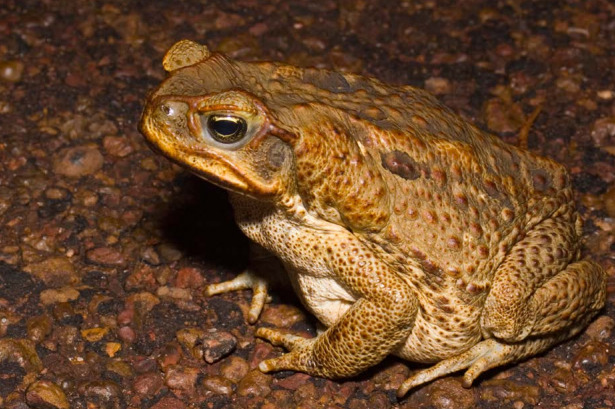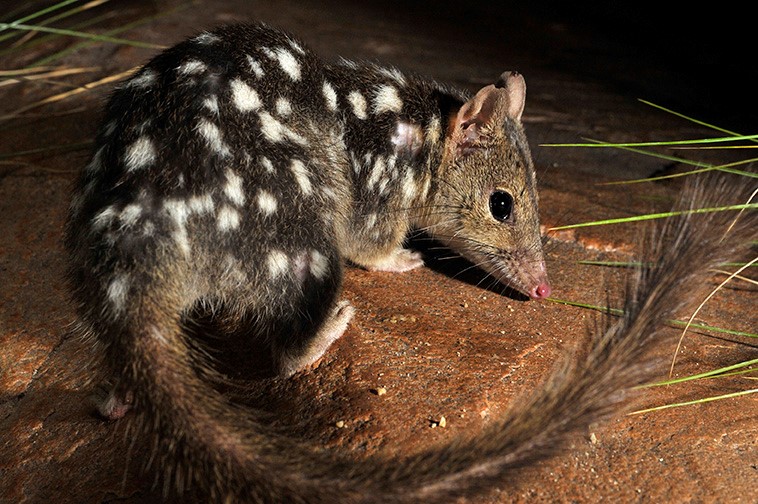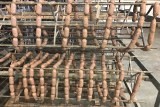National Science Week 12 – 20 August 2017
National Science Week is an opportunity to celebrate and share knowledge in science and technology, acknowledging the contributions Australian scientists make to the world of knowledge. More information on National Science Week can be found on the website.
Celebrating Research in Invasion Ecology
Australia has a relatively poor track record when it comes to invasive species with numerous vertebrate fauna species which pose significant threats to biodiversity and native species populations. Scientists specializing in ecology and particularly invasion ecology have been examining ways to manage, mitigate and control invasive species across the country.

One of the biggest threats to biodiversity in Northern Australia is the ever-increasing spread of the Cane Toad which has now reached the Kimberley Region in WA. Unfortunately, Cane Toads have established so prolifically they fail to meet the criteria to be successfully eradicated and with a vast landscape, much of which is inaccessible, controlling spread or population numbers is incredibly difficult (Price-Rees et al., 2011). This leaves mitigating impacts to native species and ecosystems as an option to reduce impacts associated with Cane Toads (Price-Rees et al., 2011).
Taste Aversion
Cane Toads are highly toxic, and many native predators (lizards, birds, mammals) dies after attacking or consuming Cane Toads. Conditioned Taste Aversion is one method scientists are using to reduce the impact of Cane Toad spread on native species which might consume toads. Taste Aversion involves an animal associating the taste of a food item with post-consumption illness resulting in the avoidance of the food item (O’Donnell et al., 2010).

Taste Aversion to Cane Toads has been trialed using Cane Toad sausages, minced toad meat with a small amount of a nausea inducing chemical (Webb et al., 2015). Success has been seen in Northern Quolls fed Cane Toad Sausages in captivity and then released; these released Quolls showed a greater survival rate than Cane Toad ‘naïve’ Quolls. Female Quolls also taught Cane Toad aversion to their offspring, subsequently increasing their chance of survival (Webb et al., 2015; Kelly & Phillips, 2017). Similar results have been found in Blue-Tongues Skinks (Price-Rees et al., 2013).
The success of the Cane Toad Sausage program has seen a call-out for the collection of toads in the East Kimberley to keep making sausages to prepare fauna populations for the imminent arrival of Cane Toads. These results suggest that to some extent we can mitigate the impacts of Cane Toads if we act now, especially given that Northern Quoll populations in Queensland and the Northern territory have persisted through Cane Toad invasions suggesting that behavioural mechanisms are at play (Kelly & Phillips, 2017).

For more information about Cane Toads and Taste Aversion see the references below.
- Cramer Viki A., Dunlop Judy, Davis Rob, Ellis Ryan, Barnett Belinda, Cook Annette, Morris Keith, van Leeuwen Stephen (2016) Research priorities for the northern quoll (Dasyurus hallucatus) in the Pilbara region of Western Australia. Australian Mammalogy 38, 135-148.
- Kelly, E & Phillips, B. (2017) Get smart: native mammal develops toad-smart behavior in response to a toxic invader. Behav Ecol; 28 (3): 854-858. doi: 10.1093/beheco/arx045
- O’Donnell, S., Webb, J. K. and Shine, R. (2010), Conditioned taste aversion enhances the survival of an endangered predator imperilled by a toxic invader. Journal of Applied Ecology, 47: 558–565. doi:10.1111/j.1365-2664.2010.01802.x
- Price-Rees, S. J., Webb, J. K. and Shine, R. (2011), School for Skinks: Can Conditioned Taste Aversion Enable Bluetongue Lizards (Tiliqua scincoides) to Avoid Toxic Cane Toads (Rhinella marina) as Prey?. Ethology, 117: 749–757. doi:10.1111/j.1439-0310.2011.01935.x
- Price-Rees, S. J., Webb, J. K. and Shine, R. (2013), Reducing the impact of a toxic invader by inducing taste aversion in an imperiled native reptile predator. Anim Conserv, 16: 386–394. doi:10.1111/acv.12004
- Webb, J., Legge, S., Tuft, K., Cremona, T., Austin, C. (2015). Can we mitigate cane toad impacts on northern quolls? | Final report. National Environmental Research Program, Northern Australia Hub. Charles Darwin University, Casuarina, NT.
- Cane toad sausages in production at Harvey bait factory to protect Kimberley wildlife. http://www.abc.net.au/news/rural/2017-02-08/harvey-bait-factory-churning-out-cane-toad-sausages/8248676
- AWC scientists arming Mornington against cane toads. http://www.australianwildlife.org/field-updates/2015/awc-scientists-arming-mornington-against-cane-toads.aspx
